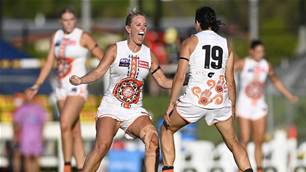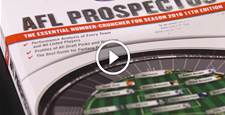Last AFL season saw some massive moves among the financial heavyweights of the sport, a new report has revealed.
Last year's grand finalists Collingwood and West Coast Eagles took out the top two spots on the 2018 AFL club revenue ladder, with West Coast Eagles recording $86.3 million in revenue and Collingwood $82.1m for 2018.
The remainder of the Victorian Big Four – Richmond, Hawthorn and Essendo – also feature near the top of the table, finishing third, fourth and sixth, respectively.
According to IBISWorld, the growth of the AFL as a code is evident in the financial performance of its teams, with only two sides reporting a revenue decline from the previous year.
“Gold Coast, which had significant on-field struggles in 2018, was one of those teams who reported a revenue decline,” said IBISWorld Senior Industry Analyst, Tom Youl.
“The Essendon Bombers also recorded lower revenue, despite strong growth in operational revenue attributable to an improved playing season.
"Rather, the decline was attributable to an almost $3 million decline in donations.
"The club had previously encouraged members to offer financial support in response to heavy fines and legal costs associated with ASADA investigations."
The Western Bulldogs and Melbourne Demons reported the greatest revenue growth from the previous year. However, both clubs benefited from non-operational incomes as well.
“The Western Bulldogs’ revenue has risen by $18 million due to the Victorian Government transferring the land at the Whitten Oval to the club for community development purposes," said Youl.
":Otherwise, the club would have finished 15th on the revenue ladder, and reported a revenue decline from 2016-17.
“Melbourne benefited from the $7 million gain on sale of the Leighoak Club as part of the club’s move away from gaming revenue. Unlike the Bulldogs, the Demons reported significant growth in operational revenue after the club’s first finals appearance since 2006.”
Collingwood, Brisbane and North Melbourne also benefited from improved on-field performances in the 2018 season.
“The West Coast Eagles are again the most profitable AFL club in 2018, excluding one-off gains," added Youl.
"The club benefited from its grand final victory, with clubs being rewarded $1 million in prize money for winning the cup, and the move to Optus Stadium.
"The new stadium has a capacity of about 60,000, a boost of nearly 17,000 compared with the Eagles’ former home ground, Subiaco Oval"
Home and away game attendances grew by 2.4% in 2018 across the league according to IBISWorld.
Attendance remains one of the core performance measures in the AFL, and is one of the most effective ways to measure fan engagement with the sport. At a team level, attendance is an indicator of fanbase numbers and on-field performance.
The home-game attendance rankings reflect revenue ladder rankings, as game tickets and membership incomes are the core differentiator of revenue at the club level. Major clubs Richmond, West Coast Eagles and Collingwood topped the attendance ladder in 2018.
“While Richmond and Collingwood again benefited from marquee home games at the MCG, West Coast Eagles and Fremantle, reported significant attendance growth due to the move to Optus Stadium," said Youl.
"The other notable mover, Melbourne Demons, again were helped by the team’s improved standing on the official AFL ladder.
“Conversely, Carlton, St Kilda and the Western Bulldogs attendances suffered due to poor win-loss records. North Melbourne and Hawthorn’s average attendances are constrained by each clubs’ four home games sold to Tasmanian locations.
"Melbourne Demons also sell home games, with two played in the Northern Territory.”
In more positive news for the AFL, the 2018 Finals Series attendance rose by 26.5% from the previous season.
According to IBISWorld, this attendance growth was due to more games between major Victorian clubs at the MCG. The MCG’s grand capacity provided more opportunity for club and AFL members to attend.
But Youl added: “The AFL will no doubt be concerned with Gold Coast Suns and GWS GIANTS attendances in 2018.
"While rankings and average numbers should be lower for expansion teams, the decline reported by both clubs would be worrisome"
Related Articles

Socceroo star's message to kids: Don't be an AFL player

Updated: AFLW Round 2 preview and schedule















